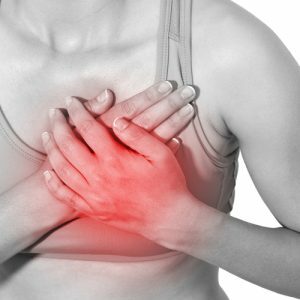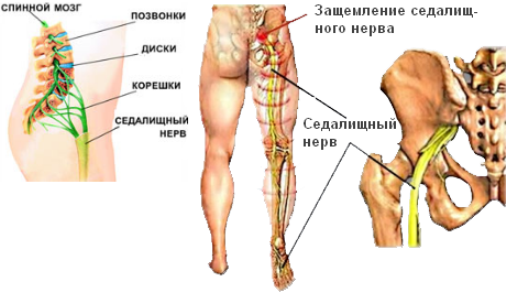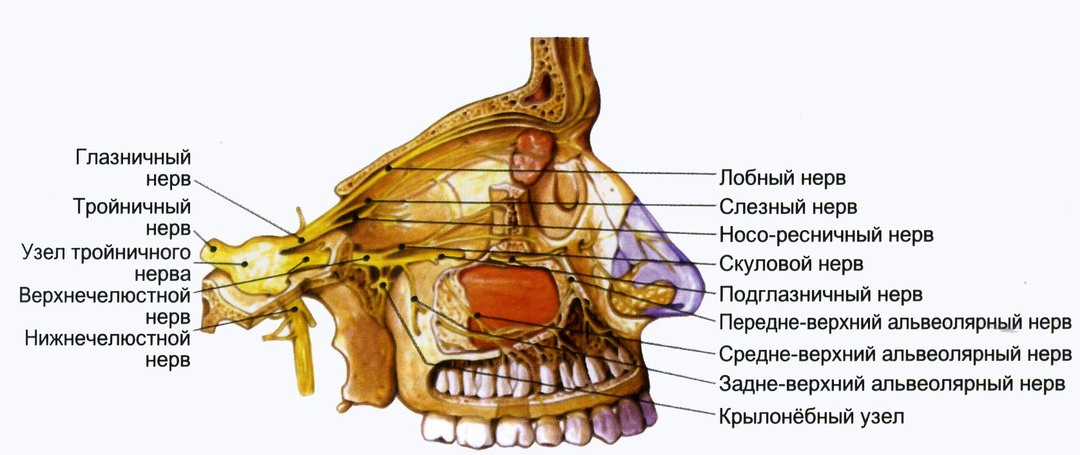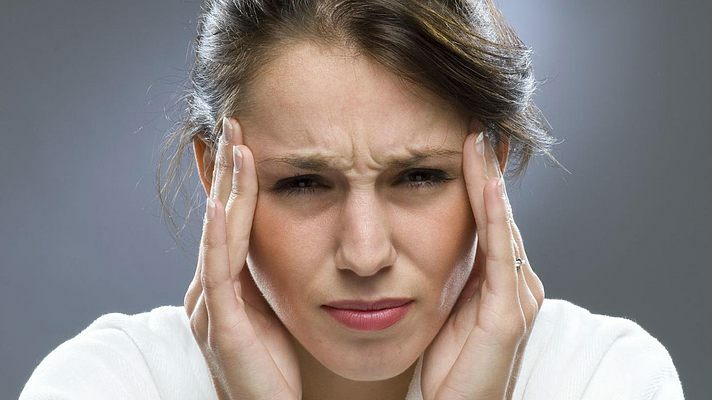Pain in the chest: causes, nature, treatment
 Many chest pains are associated with heart problems, but in fact, this characteristic symptom can indicate a variety of pathologies.Doctors differentiate chest pains not only by their nature, but also by the degree of danger to the health and life of the patient.
Many chest pains are associated with heart problems, but in fact, this characteristic symptom can indicate a variety of pathologies.Doctors differentiate chest pains not only by their nature, but also by the degree of danger to the health and life of the patient.
Causes of chest pain
Chest pains can appear absolutely suddenly, be sharp and stitching or aching and cutting, in some cases the pain syndrome is characterized by a cardiologist patient as a burning sensation behind the sternum. Doctors are well aware that first of all it is necessary to differentiate the symptom that can be caused by the following reasons :
- cardiac pathologies - ischemic heart disease( angina and / or myocardial infarction), arrhythmia, myocarditis, pericarditis, aortic dissection, cardialgia,Heart defects( congenital / acquired) and others;
- diseases occurring in the organs of the gastrointestinal tract - inflammatory processes in the stomach, esophagus and / or duodenum, acute attack of inflammation of the pancreas, the presence of gallstones, gastroesorflux syndrome, rupture of the esophagus;
- pathological processes in the respiratory system - bronchitis of acute and chronic form, obstructive bronchitis, inflammation of small bronchi, pneumonia, pleurisy;Systemic diseases
- - lupus erythematosus;
- inflammatory and infectious processes in the musculoskeletal system - arthrosis( joint pathology), neurobolia, spine trauma.
In addition, often chest pains are caused by hormonal disorders and problems in the mammary gland - for example, with the development of mastopathy.
With angina, chest pain is transient, receding after 15-20 minutes, even more quickly the condition stabilizes after using medications with a vasodilating effect( for example, nitroglycerin). Myocardial infarction differentiates according to the following features:
- pain is spilled and has a severe pressing character;
- syndrome does not recede even after taking specific drugs;
- has shortness of breath, fear of death, skin becomes pale.
Character of chest pains
Each attack of pain in the chest area can have different characteristics. Doctors classify them according to the following characteristics:
- Angina and myocardial infarction ( ischemic heart disease).In this case, the pain will be painful and at the same time burning, many patients describe ischemic pain as "pressing from within".Pain syndrome with angina and myocardial infarction does not have a clear localization, it can give to the left arm, the left side of the neck.There is a pain syndrome in the pathologies under consideration only under certain conditions:
- immediately after taking a lot of heavy food;
- at high physical exertion;
- after suffering nervous breakdowns and negative psycho-emotional outbursts;
- with a sudden increase in blood pressure.
- Pericarditis .In this case, the pain in the chest will be localized below and to the left, the syndrome has a pronounced changeable character, the pain intensity is variable.The patient experiences a clear increase in chest pain in the prone position, the least intensive syndrome manifests itself in the sitting position with the inclination of the trunk and head forward and down.
- Aortic dissection .Pain in the chest in this pathology is concentrated in the center, can have a clear localization, but in some cases differ in irradiation to the left scapula and even the lower back.Note: chest pain with aortic dissection always occurs suddenly, differs in strength and severity - the patient may even lose consciousness.
- Neuroboli .There are complaints of pressure in the entire chest, a clear localization of the pain syndrome the patient can not.Neurobols are always sharp and intensified only with a deep breath.
- Diseases of the gastrointestinal tract .They almost always have a burning nature - some patients indicate that they experience both heartburn and a strong attack of burning pain.The localization of the syndrome is not determined - the chest and blades, and neck are also covered with pain.
Please note: for diseases of the respiratory system( bronchitis, pleurisy), chest pain will be strong, permanent, intensifying when trying to take a deep, full breath.
Pain in the chest can be spasmodic - in this case we can assume that there is some obstacle in the esophagus for food.Such pain passes quickly enough as soon as the cause is eliminated.
How to recognize a dangerous state and the "golden hour" - in the video review:
How to find out why the chest hurts?
To differentiate chest pains and make an accurate diagnosis, doctors conduct a complete examination of the patient:
- ultrasound examination of the thorax and abdominal organs;
- X-ray examination;
- electrocardiogram;
- monitoring the work of the heart at rest and during physical exertion;
- computed tomography.
Be sure to conduct a survey of a patient - a history of previously diagnosed diseases of the cardiovascular system and organs of the gastrointestinal tract may be revealed.
Chest pain - when should I see a doctor?
Of course, the best option is an instant access to specialists after the first attack of pain in the chest.But in medicine it is customary to differentiate the conditions under which emergency help of professionals may be needed. What characteristics of chest pain should be a signal for immediate reference to specialists :
- Chest pain is combined with acceleration( up to 90 beats per minute) or with a slowing( up to 50 beats per minute) pulse.
- Sudden decrease or increase in blood pressure on the background of chest pain.
- A powerful attack of acute pain directly in the heart.
- Appearance of dyspnea on the background of pain in the chest.
- A deep breath and cough provokes an intensification of pain.
- This syndrome is accompanied by high body temperature, chills, severe dizziness.
- The pain is accompanied by a sharp weakness in the arm / leg or a pronounced asymmetry of the face.
Please note: the above characteristics of chest pain may indicate a life-threatening condition for the patient.Do not take any action on your own, you need to call the ambulance and expect the arrival of specialists.
It is possible to undergo a planned examination of doctors in out-patient institutions with the following chest pains:
- irregular, with low intensity;
- appearing only in certain conditions - after physical exertion, after the transferred stress;
- discontinued after use of vasodilator drugs.
If the pain in the chest appears periodically, then before visiting the doctor, you can maintain a diary of monitoring your own health:
- at what time of the day there are pains;
- are they related to eating;
- how long the attack lasts;
- does the pain disturb at rest, during sleep;
- in which position the attack is most easily tolerated;
- helps to relieve pain in the chest vasodilator or analgesic medications.
This monitoring of the health and progress of the pain syndrome will help the doctor diagnose.
How to recognize "false pains" in the heart - in the video review:
Treatment
Treatment of chest pain should be performed only by a specialist - it is necessary to identify the true cause of the syndrome in question.Usually, the treatment regimens are based on the following principles:
- For cardiac causes of chest pain, non-steroidal anti-inflammatory drugs, vasodilators, analgesics are prescribed.If the patient is diagnosed with myocardial infarction or aortic dissection, he is shown immediate hospitalization and emergency measures, up to artificial ventilation.
- If the cause of chest pain is the pathology of the stomach, duodenum or pancreas / gallbladder, then complex treatment is used:
- anti-inflammatory drugs;
- products with antibacterial action;
- preparations, stabilizing the production of gastric enzymes.
- In the case of diagnosing diseases of the respiratory system, specific therapy will be prescribed to get rid of the inflammatory process.
What can I do before visiting a doctor:- calm down and take a comfortable position - even with an acute attack of chest pain, there should not be panic;
- to stabilize breathing, even if there is shortness of breath - to breathe deeply and evenly;
- take a tablet with an analgesic effect - Tempalgin, Analgin and others.
Please note: if the above measures do not help and the pain does not go away for 20 minutes, but becomes more intense, then you need to call a doctor - there may be a myocardial infarction and other serious cardiological problems.
Preventative measures
Prevention of chest pain does not have clear positions - too many pathological conditions can provoke this syndrome.But doctors recommend:
- in time to treat diseases of the stomach, duodenum, gallbladder;
- , when the first signs of the pathology of the respiratory system appear, go through the examination and get appointments from the doctor;
- in the case of previously occurring heart attacks always have in the medicine cabinet Nitroglycerin, Validol, Corvalol - these drugs will help to quickly relieve the pain with angina pectoris.
For more information about preventive measures, the specialist says:
. Note: if earlier there were bouts of chest pain after physical exertion, then the training / training should be adjusted, and if the syndrome in question occurs after taking a large amount of food, then the nutritionist will need help.Compliance with the recommendations of the attending physician will help to minimize the number of seizures.
Pain in the chest can not be called an absolutely dangerous syndrome - only a doctor after a full examination of the patient will be able to determine the severity of the problem.But even with extremely irregular attacks of chest pain and low intensity, it is necessary to consult a doctor - it is necessary to fight the problem on a professional level.
Yana Tsygankova, medical reviewer, therapeutist of the highest qualification category.



